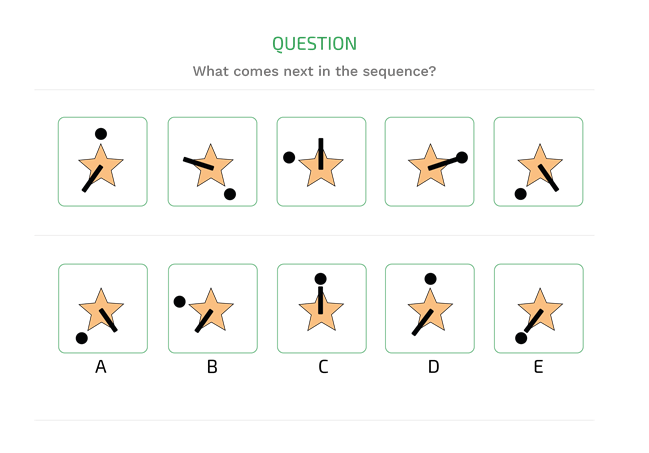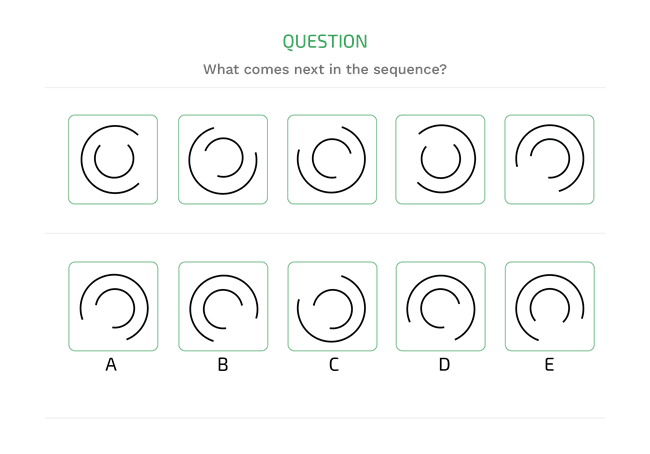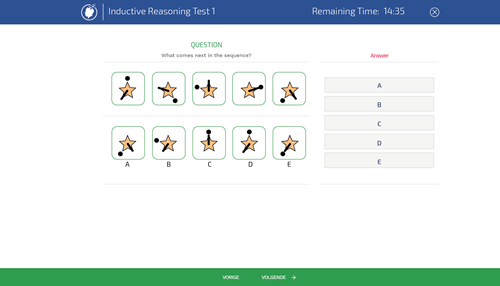The definition of Inductive Reasoning (bottom-up logic), connotes the reasoning methodology wherein proposed premises and assumptions imply some evidence towards the acceptance of a truism or conclusion but need to be diligently investigated further. Inductive Reasoning tests assess your general intelligence and more specifically, your ability to synthesize specific observations into a generalizable holistic view.
In Inductive Reasoning Tests, you will be presented with a set of graphical representations ( about 5) that follow an implied and specific pattern that is intended to be hidden to a certain degree. Only through keen observation and exploration of related concepts and ideas, the correct line of reasoning that solves the question may be brought to your attention. Inductive Reasoning tests can be complex to solve as you need to be an astute logical thinker with the capacity to make fast inferences in quick succession, while also being able to cross out invalid tangents.
It is a common misconception that you can’t improve your IQ test score! Klauer et al (2002) proved in a study of 279 participants that Inductive Reasoning training improves fluid intelligence. So if you have an important assessment that puts your Inductive Reasoning skills to the test, start practising! We can help you excel at Inductive Reasoning and help you ace your test. Our science-backed exercises in our tailor-made and hand-picked Inductive Reasoning Test Package, created by our team of business psychologists and psychometric test experts consists of 12 tests with 144 questions in total!


 The right answer to the example question above is B. This answer can be found by discovering the following patterns:
The right answer to the example question above is B. This answer can be found by discovering the following patterns: